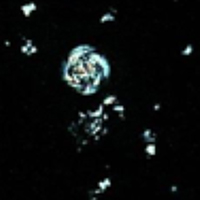Phacotus lenticularis content in carbonate sediments and epilimnion in four German hard water lakes
P. lenticularis content in German hard-water lakes

All claims expressed in this article are solely those of the authors and do not necessarily represent those of their affiliated organizations, or those of the publisher, the editors and the reviewers. Any product that may be evaluated in this article or claim that may be made by its manufacturer is not guaranteed or endorsed by the publisher.
Authors
Autochthonous calcite precipitation is an important process for C-fixation in hard-water lakes, which is mainly induced by the photosynthesis of planktonic microorganisms. Among these, the widespread calcifying green alga Phacotus lenticularis (Ehrenberg) Diesing contributes to biogenic calcite precipitation in temperate regions. Its role in carbonate precipitation needs to be investigated, because there are no studies dedicated to the quantitative contribution of Phacotus shells to long term carbonate sequestration in hard-water lake sediments. In order to fill this gap, the Phacotus shell content in the sediments of four German hard-water lakes was determined and compared to the fraction of Phacotus shells in the total suspended autochthonous calcite of the euphotic zone.
It was found that the Phacotus shells contributed at least 10% to the autochthonous carbonate precipitation in the upper water column in three investigated lakes. During a Phacotus mass occurrence with a cell density of 1.8 × 106 Ind L-1 in Lake Hopfensee, even 59% of the 3.6 mg L-1 total carbonate concentration consisted of Phacotus shells. In contrast to this high amount, the topmost basinal sediment contained a Phacotus shell content between 80 and 36,252 individuals per mg dry sediment, representing only 0.02% to 2.28% of the total carbonate sediment content. In a gravity core from Lake Grosser Ostersee, dating back ~150 years, the Phacotus shell content was continuously below 0.24% whereas the shell diameters remained equal to those of living individuals found in the water column proving that Phacotus shells are capable to persist in the sediment after deposition.
A main reason for the large discrepancy between Phacotus shell abundance in the euphotic zone and in sediment was found to be the gross authigenic carbonate precipitation, which dilutes the sedimenting Phacotus shells that accumulate exclusively during short and intensive population peaks in summer. Additionally, dissolution of the carbonate shells during sedimentation was proven to be a relevant factor in Lake Igelsbachsee by means of reducing the number of Phacotus shells reaching the lake bottom. These facts explain that short-term high Phacotus carbonate contents of the total suspended carbonate in the water column do not mirror the contribution of Phacotus shells in the sedimentary record.
Edited by
Diego Fontaneto, CNR-IRSA Verbania, ItalySupporting Agencies
Funding has been provided by the Bavarian State Ministry of the Environment and Consumer Protection, Project Nr. TLK10U-6627Professor
ETH Zurich, Department of Earth Sciences, Zürich, Switzerland
Co-Director of the Limnological Research Station






